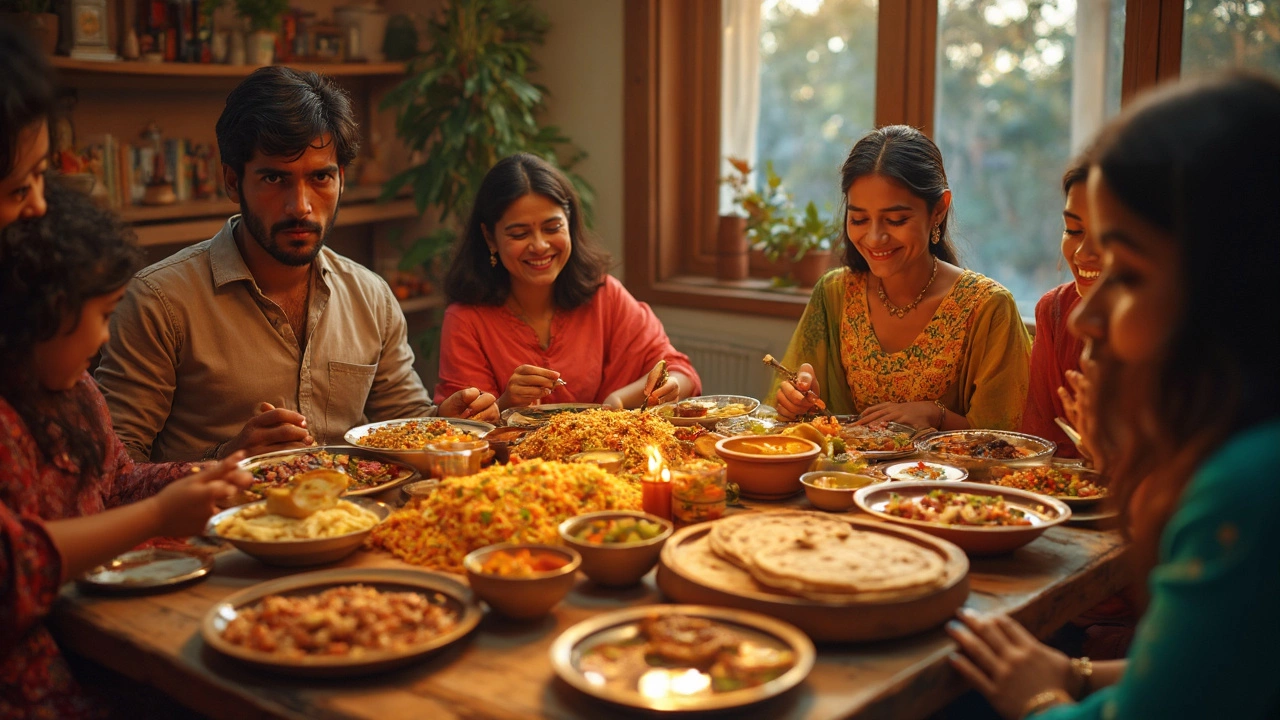Vegetarian Diet: Your Indian Plant‑Based Kitchen Companion
When exploring vegetarian diet, a way of eating that excludes meat, fish, and poultry while emphasizing vegetables, grains, legumes, nuts, and dairy. Also known as plant‑based eating, it offers health benefits, cultural richness, and sustainable choices. A core protein source in this lifestyle is paneer, a fresh Indian cheese that provides calcium and a firm texture for grilling, currying, or crumbling into salads. For those who prefer a legume‑based option, dal, split pulses cooked with spices, delivers plant protein, fiber, and iron becomes a staple. Flavorful sauces like curry, a blend of spices, herbs, and often a tomato or coconut base that coats vegetables and legumes turn simple ingredients into aromatic meals. To finish a plate, chutney, a tangy, often spicy condiment made from herbs, fruit, or nuts adds a burst of freshness that balances richness. Together these elements illustrate how a vegetarian diet encompasses diverse textures, nutrients, and flavors, making it both satisfying and adaptable to any Indian region.
Why the Vegetarian Diet Works for Every Kitchen
People choose a vegetarian diet for many reasons – health, ethics, environment, or simply love of flavor. Health‑wise, the mix of legumes, whole grains, and dairy supplies protein without the saturated fats found in many meats. The high fiber content of dal and vegetables supports digestion and steady energy. Cultural traditions across India have refined vegetarian cooking for centuries, so you’ll find regional twists: a mustard‑seed‑laden sarson da saag from Punjab, a coconut‑rich avial from Kerala, or a spice‑laden bhindi masala from Gujarat. Practical tips make the transition smoother: keep a stock of canned tomatoes, ginger‑garlic paste, and a basic spice rack (turmeric, cumin, coriander, garam masala). Rotate protein sources – paneer one night, dal the next – to avoid boredom. Use chutney not just as a side but as a glaze for roasted vegetables or a spread in sandwiches. And remember, cooking techniques matter: tempering spices in hot oil releases aromatics, while slow‑cooking dal improves texture and flavor. By mastering these basics, you’ll turn everyday meals into vibrant, nutritious dishes without missing meat.
Now that you know the building blocks, you’re ready to dive into the collection below. We’ve gathered articles that break down classic dishes, compare paneer and tofu, explain the science behind lemon in biryani, and troubleshoot common roti problems – all with a vegetarian lens. Browse through, pick a topic that sparks your curiosity, and start cooking confident, flavorful meals today.

Which Country Eats the Least Meat? Insights on Vegetarian Traditions
Ever wonder which country tops the list for eating the least meat? This article dives into the surprising numbers behind global meat consumption, with a spotlight on India’s strong vegetarian culture. You’ll find out how traditions, beliefs, and local dishes shape eating habits. Plus, we’ll share some practical tips for enjoying vegetarian Indian meals at home. Whether you’re cutting back on meat or just curious, you’ll get plenty of useful info here.